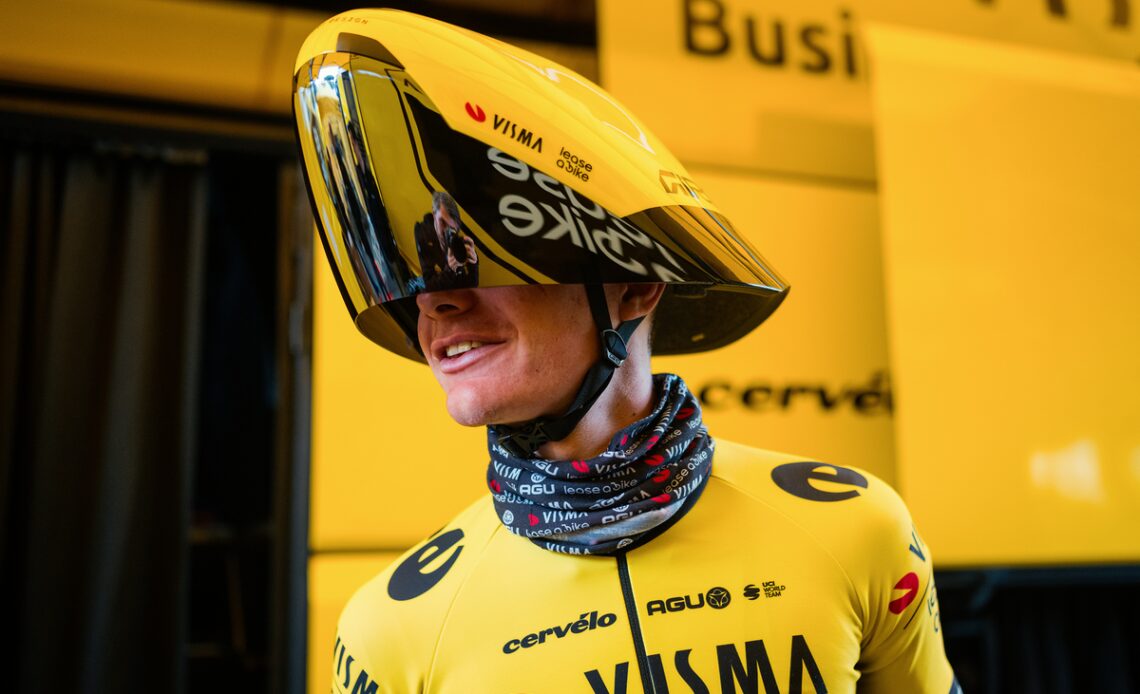In the world of time trial helmets, things have been getting weird for a couple of years now. But as of today, you can forget the Specialized TT5 and its accompanying ‘head sock,’ and you can forget the Sweet Protection Redeemer 2Vi which broke cover with Uno X last season.
They both had a reputation for looking a little bit, well, mad, but thanks to Giro, there’s now a whole other league.
At the start of Tirreno Adriatico, the Giro-sponsored Visma-Lease a Bike team have unveiled the brand’s latest model, complete with an enormous visor, massive protruding leading edge and wide wings at the rear.
Like the other wild helmets of late, it is bulbous in its shape and size, but the defining feature is undoubtedly the extreme protruding leading edge, which extends upward from the rider by a good 20cm, perhaps even more.
Covering the entire frontal face is a gigantic visor. We’ve seen images of this visor in both a tinted and clear finish, and can confirm it is removable. It wraps around the side of the helmet, no doubt increasing the peripheral vision of the rider, but perhaps more pertinently is that it continues upward right to the front of the leading ‘point’. Given the ongoing discussion about riders’ time trial positions reducing their ability to actually see the road ahead of them, this could well be a positive thing for safety, and it’s good to see brands chasing more than just more aero.
The top-down view shows a totally smooth leading edge, save for a small black wedge shape across the top. It’s unclear what the purpose of this is, or whether it can be removed for airflow.
It also shows a total width at the trailing edge that is about the same as the rider’s shoulders – Attila Valter’s, in this case.
An increased overall size is becoming common in time trial helmets as aerodynamicists look to push air off the smooth leading edge and around the rider’s not-very-aerodynamic shoulders.
The first to toy with this type of wild design was POC, whose Tempor helmet was first unveiled way back in 2012 ahead of the London Olympics. It fell out of favour very quickly, before gaining popularity among time triallists as the understanding of aerodynamics became more widespread.
Over the past few years, that understanding has seemingly made its way back to engineers and designers, and the popularity has helped them create wilder designs to…
Click Here to Read the Full Original Article at CyclingNews RSS Feed…

